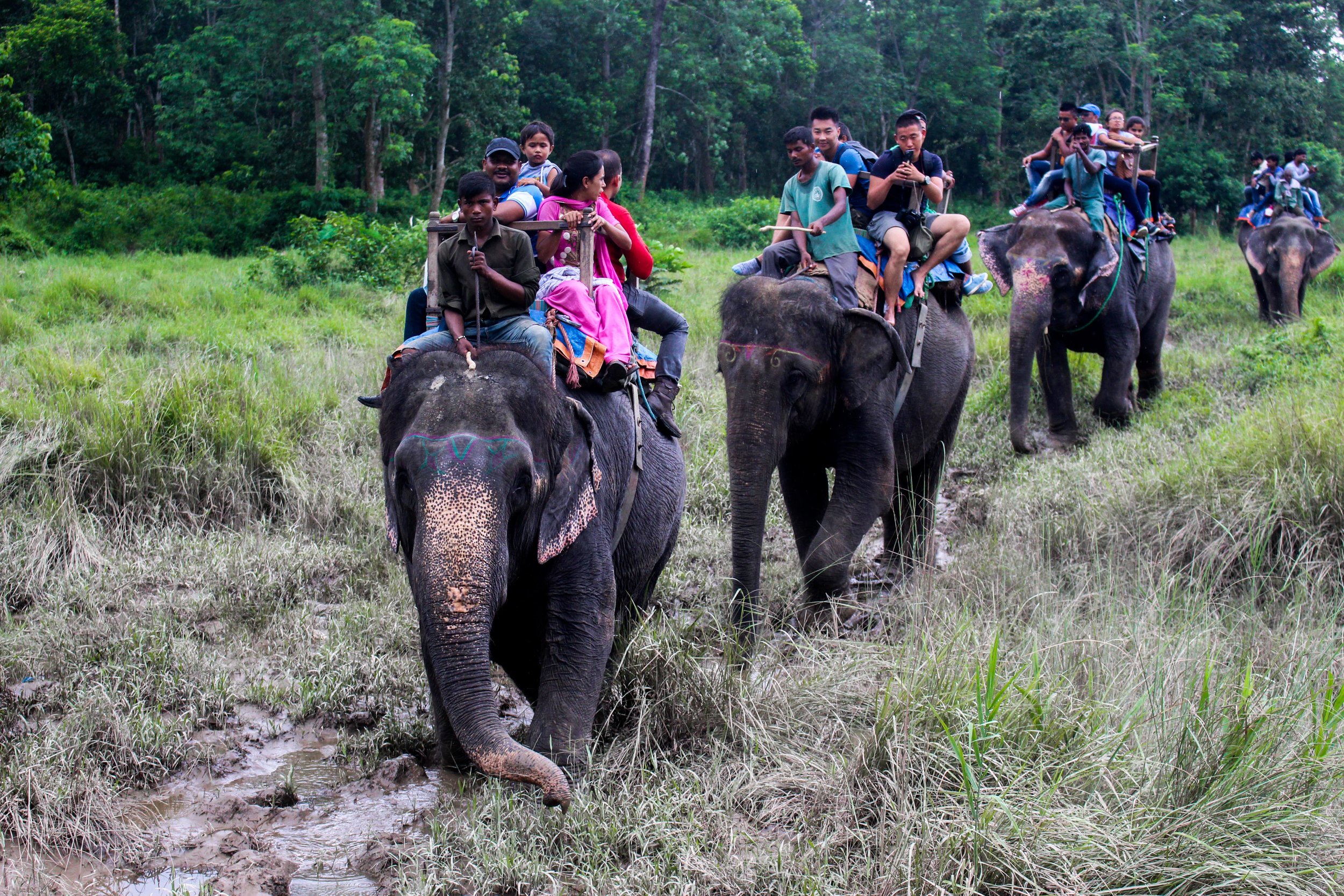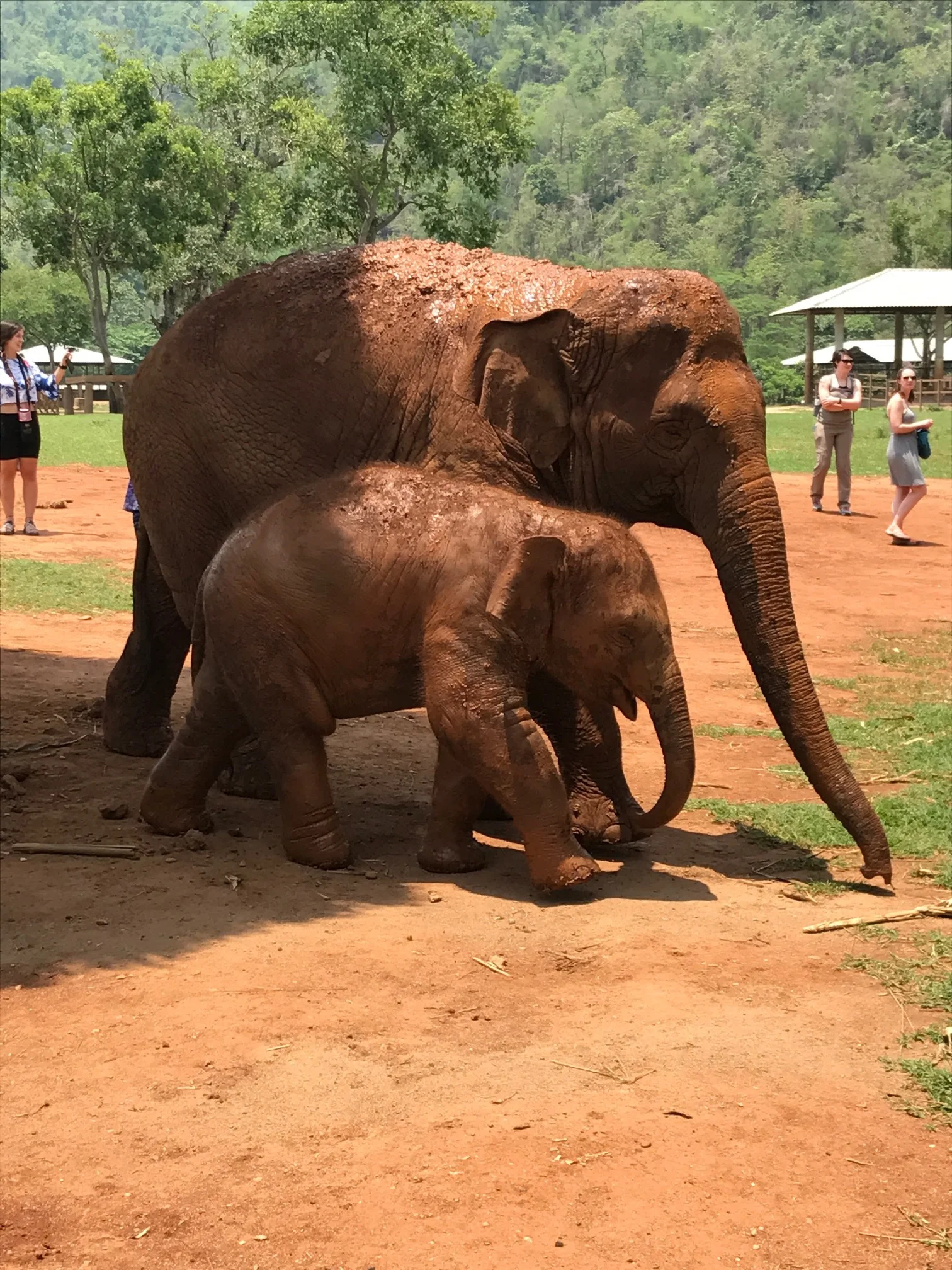Before you participate in elephant tourism, learn about the barbaric abuse called phajaan, or “the crush.” Choose an elephant sanctuary instead.
As fun as elephant treks sound, they perpetuate a brutal practice of animal abuse
At first it seemed harmless, even charming. Big, lumbering elephants doing astounding tricks. I understand how tempting it is to want to ride an elephant or see an elephant show when you’re in a part of the world that offers such experiences, like Thailand and other countries in Asia.
But there’s good reason circuses in the United States have stopped having elephant acts. The process to get elephants to obey orders involves “breaking” them — and once you learn about this barbaric, heartbreaking practice, you’ll never want to be a part of elephant tourism again.
“Baby elephants are taken from their mothers and kept in small pens, where they’re beaten and starved for several weeks. ”
Of the 45,000 or so Asian elephants left in the world, up to 4,000 are held captive in Thailand, according to PETA Asia.
Before you book a trip to an elephant park when you’re in Chiang Mai or a similar region, do some research. Find a spot like the Elephant Nature Park that rescues abused elephants instead of inflicting intense pain upon these noble creatures.
“Behind the exotic façade of elephant tourism is a world of merciless beatings, broken spirits, and lifelong deprivation,” attests PETA Asia. “Once revered, elephants in Thailand today are treated like slaves.”
This poor baby elephant is undergoing the torture known as “the crush,” or phajaan
To train an elephant, it must undergo a horrific process called “the crush,” or phajaan.
Baby elephants — some still nursing — are taken from their mothers and kept in small pens or have all four legs tied up, and are beaten and starved for several weeks. The level of suffering elephants undergo is “severe,” according to World Animal Protection, which released a report about elephant tourism in 2017.
Bullhooks, long metal poles with a hook at the tip, are used to stab the elephant’s head, slash its skin and pull its ears. At an elephant show, you might notice torn ears or scarred foreheads caused during the crush.
The crush is a hill tribe ritual.
The practice began in the hill tribes of India and Southeast Asia, according to Thailand Elephants. During the phajaan “ritual,” the tribe’s shaman tries to separate the spirit of an elephant from its body.
“In reality, however, the phajaan has nothing to do with the separation of spirit and everything to do with torturing an elephant until it is so fearful of its human captors that it will do anything to avoid being hurt again,” the site writes.
As we learned on the ride to the Elephant Nature Park, during the crush, elephants have to be monitored around the clock because they’ll try to kill themselves by stepping on their trunk. If that doesn’t break your heart, I’d check your chest cavity — it’s probably empty.
The living conditions are brutal.
Elephants by nature are intelligent animals who have complex social groups. But in captivity, more than three-quarters of elephants are chained when not used for entertainment purposes, according to the World Animal Protection report. They have very little interaction with other elephants, are fed poor diets, have no access to proper veterinary care and are often exposed to loud music and throngs of tourists — stressful situations that go against their nature.
Elephant painting also involves abuse
Even elephant painting involves abuse.
I always thought this was cute — and what was the harm? They just give an elephant a brush and it creates a work of art.
Turns out to get the elephants to paint, the handlers, known as mahouts, hold the elephant's ear, hiding the fact that they’re stabbing a nail or sharpened fingernail into its skin.
The cruel treatment of elephants has tragic repercussions.
Elephants used for entertainment live shorter lives, have behavioral problems (for which they’re surely abused even more), are more likely to come down with chronic diseases and are less likely to reproduce, The Guardian reports.
Elephant tourism got started because of the decline of logging.
For centuries, elephants were used to haul teak logs, but realizing how depleted the forests were becoming, the Thai government completely banned commercial logging in 1989. Those in the logging industry were desperate to find a use for their elephants — and tourism became a lucrative alternative, according to EARS Asia.
Instead of patronizing an operation that offers elephant rides or tricks, go to a sanctuary like the Elephant Nature Park outside of Chiang Mai, Thailand, which rescues abused elephants
Elephant tourism, sadly, is growing.
There’s a huge demand for elephant tourism — a 30% increase in recent years — but you really should resist. Give your money to a place that rescues elephants; don’t be a part of the problem.
Elephant tourism remains popular because it’s “a hidden form of cruelty,” Chiara Vitali, a wildlife expert at World Animal Protection, told The Guardian. The crush “will happen before any tourist sees an elephant, so they might see an animal that’s quite chilled out — but it had that beaten into it when it was an infant,” she explained.
“Venues that offer tourists a chance to watch elephants in genuine sanctuaries are beacons of hope that can encourage the urgently needed shift in the captive elephant tourism industry,” said Jan Schmidt-Burbach, global wildlife and veterinary advisor at World Animal Protection.
Now that you’ve learned about the horrors of training elephants, we hope you’ll never forget. –Wally
“During the crush, elephants have to be monitored because they’ll try to kill themselves by stepping on their trunk. If that doesn’t break your heart, I’d check your chest cavity — it’s probably empty.”
























